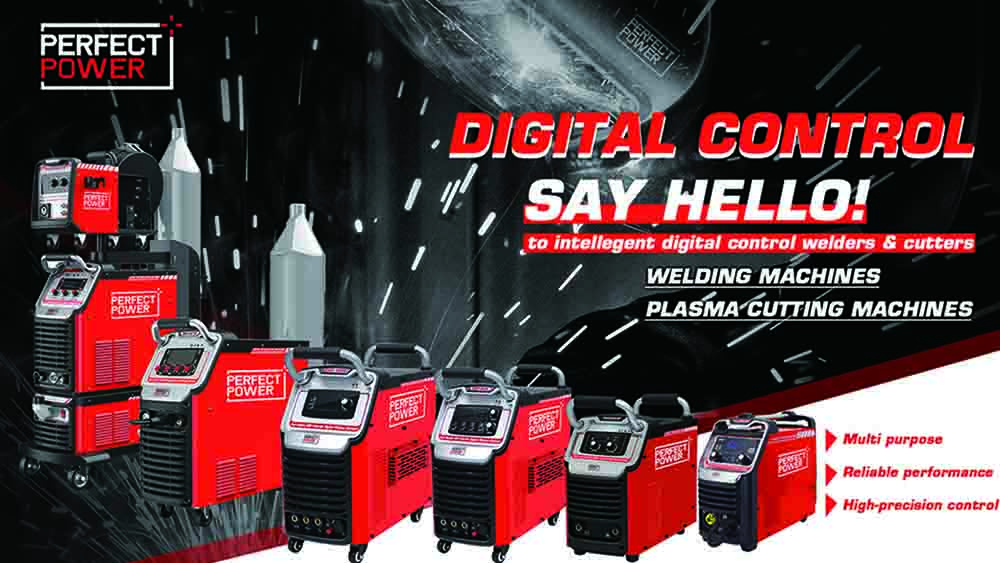
When setting up a MIG welding machine, it’s important to consider gas versus gasless options and how to select the right type of inert gas supply for a MIG welding project.
The MIG welding process uses a gas to shield the filler metal and weld pool from reacting to any elements present in the surrounding environment.
However, MIG welding can also be performed as a gasless process which uses flux core wire without the need of shielding gases. The Flux Cored Wire MIG process, formally known as Flux Cored Arc Welding – Self Shielded (FCAW-SS) uses a specially designed cored wire protecting the weld pool from oxidation during the arc welding process.
Welding is a fabrication process, in which two or more parts of metal or thermoplastics are fused together by means of heat and compression so that the two pieces form a continuum.
One of the most common forms of welding is MIG welding. Metal inert gas (MIG) welding, also known as gas metal arc welding (GMAW), is a type of welding which uses an arc welding process that joins two metals.
This type of welding uses a shielding gas to protect the molten pool of the weld metal from reacting with elements present in the atmosphere – helping to deliver a higher-quality weld on the end product.
However, there are also gasless solutions in MIG welding. With that in mind, is it better to use a gas or gasless solution in MIG welding? Perfect Power Welding Machines has created this blog to give you an idea of the pros and cons of each method.
What is the role of gas in welding?
During the welding process, the weld pool needs to be shielded from oxygen in the atmosphere to protect the quality of the weld. Industrial gases are used to protect this weld pool from external contamination.
These industrial gases are known as shielding gases, as they essentially act as a shield that prevents the molten welding pool from interacting with the surrounded gases in the air.
Shielding gases also have other functions, such as helping the transfer of metal and stability of the arc, formation of the arc plasma, stabilization of the arc toots on the surface of the material and ensuring the transfer of molten metal droplets from wire to the weld pool is smooth.
There are a range of welding gases and speciality welding gases that can be used in MIG welding, depending on the characteristics of the welding arc, the type of material being worked on and how deeply the weld will penetrate the metal.
What is gasless welding?
So, if gas is so important to the MIG welding process, what exactly is gasless welding?
A gasless MIG welder uses a flux cored wire that, instead of being called “gasless”, is known as “self-shielding”. Self-shielding MIG wires are melted by the welding arch, which in turn burn the flux in the process. This produces a gas shield around the weld, meaning there’s essentially no such thing as “gasless welding”.
Since self-shielding wires use this process to release gas, an external cylinder of gas isn’t required in the MIG welding process. This can make it easier for hobby welders, although the use of gas is normally more effective for industrial uses.
Here are the pros and cons of using self-shielding wires in MIG welding.
The pros of MIG welding without gas:
- It requires less equipment and is more portable.
- Good for outdoor work as gas can be blown away by the wind.
- It’s easier to learn and master than MIG welding with a shielding gas.
- It can be more forgiven if the material isn’t perfectly prepped for the weld.
The cons of MIG welding without gas:
- A gasless MIG welder produced more smoke and fumes, meaning it’s not a great choice for indoor welding.
- You can’t weld all material with a gasless MIG welder.
- Flux core wire can be damaged if not handled properly.
- The MIG welding machine you use must be able to support flux core wire welding.
Are you looking for more information on whether gasless or gas MIG welding is the right solution for you? Contact Perfect Power today. Our team of welding and gas experts would love to answer any questions that you may have.



